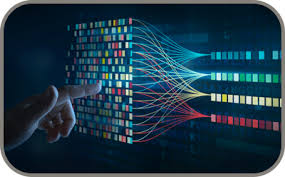From Data to Decisions: The Power of Computer Vision in Business Analytics

Strong 8k brings an ultra-HD IPTV experience to your living room and your pocket.
In today's data-driven landscape, businesses are continually seeking innovative ways to leverage technology for informed decision-making. One of the most transformative technologies in this realm is computer vision, a field that enables computers to interpret and understand visual data. By utilizing computer vision in business, organizations can enhance their analytics capabilities, streamline operations, and ultimately drive better outcomes.
Understanding Computer Vision
Computer vision is a branch of artificial intelligence (AI) that focuses on enabling machines to interpret and process images and videos in a way similar to human vision. This technology uses algorithms and deep learning models to analyze visual data, allowing businesses to extract valuable insights from their vast stores of images and videos.
The Role of Computer Vision in Business Analytics
1. Enhanced Data Collection
Traditionally, data collection involved manual processes that were often time-consuming and prone to errors. With computer vision, businesses can automate the extraction of data from images and videos. For example, retail stores can use computer vision systems to analyze customer behavior by tracking foot traffic and monitoring how shoppers interact with products. This automated data collection allows for real-time insights and significantly reduces the workload on human analysts.
2. Improved Decision-Making
The ability to analyze visual data in real-time empowers businesses to make more informed decisions. For instance, in manufacturing, computer vision can be used to monitor production lines. By detecting anomalies or defects in products through image analysis, companies can address issues before they escalate, improving product quality and operational efficiency. This proactive approach leads to better decision-making and resource allocation.
3. Predictive Analytics
Computer vision also enhances predictive analytics by providing deeper insights into customer behavior and market trends. By analyzing images from social media or e-commerce platforms, businesses can identify emerging trends and customer preferences. This information can inform marketing strategies, product development, and inventory management, ultimately leading to increased sales and customer satisfaction.
4. Automation of Routine Tasks
Many routine tasks that require visual inspections can be automated using computer vision. For instance, quality control in manufacturing often relies on human inspectors to identify defects. By implementing computer vision systems, companies can automate this process, ensuring greater consistency and accuracy. This not only improves efficiency but also allows human workers to focus on more strategic tasks, maximizing productivity.
5. Enhanced Customer Experience
Computer vision can significantly enhance the customer experience by personalizing interactions. For example, retail businesses can use facial recognition technology to analyze customer demographics and preferences, allowing for targeted marketing and tailored promotions. Additionally, computer vision can facilitate seamless checkouts through automated systems, reducing wait times and improving customer satisfaction.
Case Studies: Success Stories of Computer Vision in Business
Retail: Targeted Marketing
A major retailer implemented computer vision to analyze customer behavior in-store. By tracking foot traffic and product interactions, the company was able to tailor marketing campaigns to specific demographics, resulting in a notable increase in sales.
Manufacturing: Quality Control
A leading automotive manufacturer adopted computer vision for quality control on its production line. The system detected defects in real time, allowing for immediate corrective actions and reducing waste, ultimately improving production efficiency by 20%.
Logistics: Streamlining Operations
A logistics company used computer vision to monitor shipping containers and packages. By automating the inspection process, the company reduced errors in package handling, leading to faster delivery times and enhanced customer satisfaction.
Challenges and Considerations
While the potential of computer vision in business analytics is vast, several challenges need to be addressed:
Data Privacy: The use of computer vision, particularly in areas like facial recognition, raises privacy concerns. Businesses must navigate regulatory landscapes and ensure that they are transparent with customers about data usage.
Implementation Costs: Initial setup costs for computer vision systems can be high. Businesses need to weigh the long-term benefits against the upfront investment.
Quality of Data: The effectiveness of computer vision relies on the quality of the input data. Poor-quality images can lead to inaccurate analysis, undermining the potential benefits.
Conclusion
The power of computer vision in business analytics cannot be overstated. From automating routine tasks to enhancing decision-making and improving customer experiences, computer vision offers a wealth of opportunities for organizations looking to stay competitive in a data-driven world. As technology continues to evolve, businesses that harness the potential of computer vision will undoubtedly lead the way in innovation and efficiency, transforming raw data into actionable insights.
Note: IndiBlogHub features both user-submitted and editorial content. We do not verify third-party contributions. Read our Disclaimer and Privacy Policyfor details.


